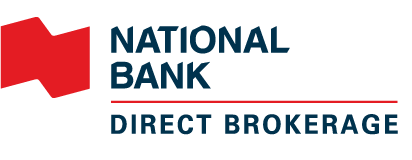What are alternative investments?
In the past, a 60/40 split between equities and fixed income would represent the typical allocation of assets for investors with a balanced risk profile. This is no longer the case for most investors. Many now seek non-traditional avenues to generate returns while enhancing their portfolio’ diversification.
Alternative investments are now part of the mix. Private equity, real assets, real estate, commodities and liquid alternatives all fall under the umbrella of this diverse asset class. Previously accessible only to institutional investors, pension funds, and high-net-worth individuals, they are now commonly used in modern day portfolio construction.
The difference between traditional and alternative investments
Investments that fall into the traditional category include stocks and bonds issued by companies or governments, or mutual funds and ETFs that hold them as underlying assets. They are usually liquid investments that can readily change hands from one investor to another. These equities and fixed income securities are part of a typical diversified portfolio.
Alternative investments, by contrast, tend to be illiquid assets that investors cannot trade as easily. Infrastructure and real estate, most notably, feature large initial investments and a longer investment time horizon. However, they can complement traditional holdings by providing exposure to asset classes other than the conventional stocks and bonds. In addition, their low correlation to these markets can reduce a portfolio’s volatility by increasing its diversification while aiming to achieve higher risk-adjusted returns.
| Traditional Investments | Alternative Investments |
|---|---|
| Stocks | Private Equity |
| Fixed income securities (bonds, Garanteed investment certificates- GICs) |
Real assets and infrastructure |
| Cash | Liquid Alternatives |
| Real Estate Investment Trusts | |
| Commodities |
The different types of alternative investments
Several different types of assets comprise the alternative investment class. Here are the main categories:
Private equity
Private equity is the gateway to a very exclusive investment opportunity set. Not all companies choose to become publicly listed and venture capital firms invest in these businesses because they often show a high potential for growth. Since private entities aren’t required to divulge anything about their strategy, they can increase their chances of outpacing rivals. Staying private relieves them of the reporting obligations and financial disclosure rules incumbent upon listed companies. Many therefore choose to postpone offering their shares to the public and remain private instead.
Real assets\Infrastructure
One can think of real assets as tangible or physical resources such as utilities, airports, toll bridges or highways, and other types of infrastructure. Key features include regulatory barriers to entry, large capital outlay requirements, as well as essential service and natural monopoly traits.
This asset class usually benefits from predictable and rising cash flows over time as a result of inelastic demand. Many of these real assets are also government regulated and have signed long-term contracts, which means that they enjoy built-in annual price hikes. The steady and increasing stream of income often leads to strong dividend growth across multiple market and economic cycles. In short, investors concerned with both long-term inflation trends and near-term pricing surprises may find it worthwhile to invest in real assets.
Liquid alternatives
Liquid alternative solutions are relatively new to the Canadian marketplace. They can employ leverage, short selling, and derivatives—options or futures contracts—to invest in underlying alternative assets and deploy sophisticated strategies that institutional investors and the hedge fund industry have used for decades. The term “liquid” refers to the ease with which investors can buy and sell shares of these investment vehicles often traded in the form of ETFs or mutual funds.
Investors can choose among numerous strategies within the liquid alternatives category. Some focus on fixed income while others concentrate on equity strategies (e.g.,arbitrage). Other well-known strategies are:
- Long\short which seeks to profit from rising and falling share prices.
- Market Neutral which aims to provide absolute returns no matter what direction the underlying market takes.
- Global macro which aims to capitalize on macroeconomic and cyclical trends regardless of the market cycle.
Real estate income trusts (REITs)
REITs typically hold a portfolio of properties and have been around for many years. Investors can purchase units of these trusts through a regulated exchange. They collect rental income which gets passed down to unitholders after deduction of all expenses. This allows retail investors to participate in the residential (e.g., apartment buildings), commercial and industrial real estate industry by taking small stakes in large-scale projects.
Commodities
Commodities consist of the raw materials used to create goods for consumers. They are traded in the form of base metals (gold, silver, copper, etc.) and agricultural (wheat, corn, soybeans) or energy products (oil, natural gas). Some consider them akin to real assets since they react differently than stocks and bonds to changing economic conditions. As the demand for goods and services increases, so does the price of the commodities integrated into their production. In fact, rising commodity prices often trigger inflation.
What are the benefits of holding alternative investments in a portfolio?
In the current environment, a growing number of investors seek sophisticated strategies that offer a low correlation to the stock and bond markets. To that end, adding alternative investment solutions to a conventional portfolio can:
- Help mitigate market volatility
- Provide a degree of protection in down markets
- Enhance portfolio diversification
- Increase the potential of achieving higher risk-adjusted returns
What are the risks of alternative investments?
As with any form of investment, risks are associated with alternative investments. Their degree of importance varies according to the types of assets held. These may include:
- Liquidity risk resulting from the absence of a secondary market
- Increased level of risk when leverage or derivative financial instruments are used
- Currency risk as the assets held are often not valued in Canadian dollars
A basic understanding of the vehicles in which they choose to invest remains the key for all investors. Only then can they make decisions that are aligned with their level of tolerance for risk.
How can I purchase alternative investments?
Self-directed investors can now easily add alternative investments to their portfolios. They have access to numerous exchange-traded funds and mutual funds that allow investors to purchase various types of alternative investments. Some solutions are actively managed while other funds are passive and simply track an underlying index.
Investors who prefer selecting individual securities can find REITs and infrastructure or commodity-focused stocks with the research tools available on their direct broker’s online trading platform. They can even purchase the shares of certain publicly listed asset management firms that offer alternative investment strategies in the hope of indirectly benefiting from their success.
Alternative investments as a diversification tool
Although the notion of diversification is nothing new, alternative investments constitute another tool at the disposal of investors to accomplish this crucial task. Taking the road less travelled by adding these types of assets to their portfolio can help investors navigate sometimes difficult markets and reach their objectives over the long term.
Start investing in alternative assets




